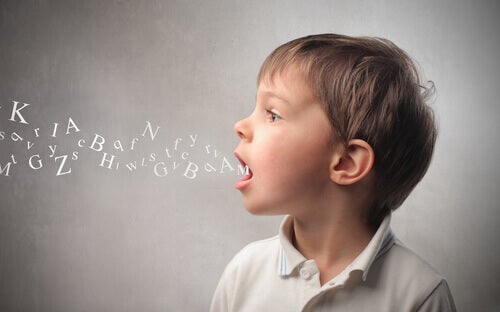When kids start talking, they make a series of language errors that result from their learning process, in fact, sometimes we get alarmed when we see that our child is uttering very simple phrases of only 3 words or that he can barely speak, but that shouldn’t be a problem, so it’s important to know when to worry and when to take those little mistakes as simple steps in your development process.
It is also necessary to take into account the fact that some of these errors usually occur also to adults: the famous linguae slip. Involuntary mistakes we make when we want to say one word but say another, or when we inadvertently exchange concepts.
- This is because sometimes our thoughts are not formed grammatically in our minds and.
- Therefore.
- It is necessary to proceed with a process of choosing the most appropriate words.
- These are some of the most common mistakes among children from 3 to 6 years old.
- Depending on the affected unit.
“We think with words, and those thoughts come to mind in the grammatical form of subject, verb, objects, and add-ons without us knowing how prayer occurs. “? Lashley, 1958?
At the semantic level, between the age of 2 and 3, children make great progress in categorization and conceptualization processes, so they begin to understand a lot of meanings, even if they are not at the same level as the older ones. children or even adults. In fact, between the age of 2 and 6, children can learn up to 5 words a day.
“Learning involves making mistakes and learning from them. “
When they start to use a new word, children are not aware of its true meaning, little by little they learn and reduce this semantic difference through their mistakes (error of judgment) and their environment, that is, they are refining the meaning of concepts. However, in this learning process two types of linguistic errors are made:
Phonetic errors are linguistic errors produced in phonemes, the smallest unit of language. Sometimes these defects affect the entire word, its syllables, or just a few phonemes. Thus, sometimes children pronounce unencented syllables, letters “Swallow?”Or they don’t pronounce the final consonant of words.
They are of the following types
There are children who speak a very limited number of phonemes, but they do very well; others, more fearless, choose to try to articulate words that exceed their abilities; in general, each child has their own articulation preferences.
“We learn the language at the end of countless experiences. ” ? Saussure?
Morphology and syntax are two basic components of language, children, in the development of this morphostyxic component, tend to use different procurement mechanisms.
Children are like parrots! They repeat what they hear and even what they shouldn’t, so when your parents say phrases, sayings or formulas of language, you try to copy them, but memory is in a block as a whole, not word for word.
Therefore, when they begin to imitate and reproduce them aloud, they do not know how they were built, only being able to count them in the context in which they learned. For example, if you hear your mother say, “How beautiful they are!You today?” for her husband, children will choose to reproduce these same words at home in the same situation. They don’t generalize that formula.
Similarly, when they learn, 3-year-olds do not know how the language system is structured, they do not know the grammatical rules or the fact that words are built according to criteria, so they learn syntactic forms are independent and isolated from each other.
Over time, they realize that there are rules they must follow and take them to the extreme. This is called hyperregulation. Examples of this are?Done?>Done, what about it?I don’t know?>?I don’t know?.
There are certain types of language behaviors that may be inappropriate for each evolutionary age and indicate a delay in language acquisition and development.
However, children’s language errors are not a symptom of a decline in the development of their language skills, on the contrary, they are a sign that the little one is progressing and beginning to understand the linguistic system (Borregon, 2008).
Arias, O. , Fidalgo, R. , Franco, N. y García, J. N. (2007). Evaluation and intervention in expressive language disorders (p. 133-142). Madrid: Pyramid.

